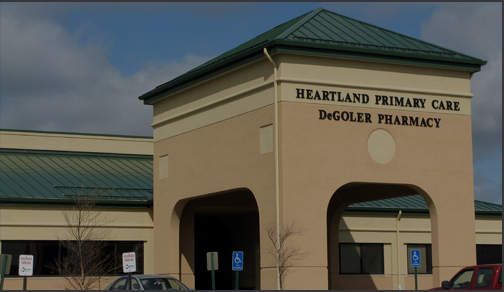The Value of Urgent Treatment Centers in Connecting the Void In Between Medical Care and Emergency Situation Providers
Immediate care centers have emerged as an essential component of the health care landscape, properly addressing the vital demand for immediate medical interest without turning to emergency situation solutions. By giving look after non-life-threatening problems, these centers help to reduce the problem on emergency clinic and improve individual accessibility to timely therapy. Their expanded hours and diverse services provide to an expanding population seeking alternatives to typical health care. Nonetheless, the progressing duty of immediate care facilities raises crucial questions about their integration within the more comprehensive health care system and the implications for individual end results and resource allowance.
Introduction of Urgent Treatment Centers
Urgent treatment centers have become an essential component of the medical care delivery system, providing easily accessible clinical services for non-life-threatening problems. These centers generally run outside basic workplace hours, offering clients an alternative to emergency situation spaces and key care settings. People looking for urgent care often present with problems such as minor injuries, infections, or ailments that call for punctual focus but do not present an instant danger to life or limb.
Immediate treatment facilities are staffed by a range of medical care specialists, including physicians, registered nurse experts, and medical professional assistants, who are equipped to identify and deal with different clinical worries. They typically include diagnostic devices such as X-ray makers and research laboratory services, enabling them to supply extensive treatment on-site.
The facility of immediate treatment facilities has actually been affected by the boosting demand for prompt medical services in a fast-paced society, where individuals might battle to protect visits with main treatment carriers. Because of this, these facilities aim to alleviate congestion in emergency departments, enhancing overall healthcare performance. In addition, urgent treatment facilities typically offer as a bridge between main treatment and emergency situation services, making sure that individuals obtain proper treatment tailored to their specific clinical needs.

Benefits of Urgent Treatment Solutions
Accessing prompt healthcare is a considerable advantage of urgent treatment services. These centers give prompt interest for non-life-threatening conditions, successfully lowering wait times compared to standard emergency situation departments. People looking for look after small injuries, ailments, or immediate wellness problems can obtain treatment without the lengthy delays often related to healthcare facility brows through.
Another key benefit is the prolonged hours of procedure. Several urgent treatment centers are open nights and weekend breaks, suiting clients who might not have the ability to visit their key care carrier throughout standard workplace hours. This versatility makes immediate treatment an accessible alternative for those with busy routines or sudden wellness problems.
Additionally, urgent care facilities usually use a large range of solutions, consisting of diagnostic screening, X-rays, and standard research laboratory solutions. This detailed approach enables quick medical diagnosis and therapy, enhancing individual complete satisfaction.
Furthermore, urgent care centers are commonly much more affordable than emergency clinic, making them an appealing alternative for individuals without insurance policy or those with high-deductible plans. Generally, urgent care services play an important role in offering available, timely, and budget friendly medical care.
Comparison With Primary Treatment
Generally, people typically weigh their alternatives in between urgent care centers and health care suppliers when looking for medical interest. Both serve important functions in the healthcare system, yet they vary substantially in extent, access, and price.
Health care companies are typically the very first point of contact for people, concentrating on long-term health and wellness monitoring, preventative care, and persistent disease management. They provide connection of treatment, promoting a patient-provider partnership that enables comprehensive health and wellness evaluations and customized therapy plans. Nevertheless, scheduling an appointment can be taxing, typically requiring days or weeks in breakthrough.
On the other hand, urgent treatment facilities provide prompt care for non-life-threatening conditions that need prompt focus, such as minor injuries or infections. These facilities commonly run beyond typical office hours, suiting patients that might not be able to visit their primary treatment provider during normal company times. Additionally, immediate treatment is normally extra economical than emergency clinic sees, making it an appealing alternative for those with restricted medical care access.
Inevitably, while urgent treatment centers and main treatment suppliers both add to patient wellness, they satisfy distinctive requirements, making it crucial for people to establish which choice finest straightens with their circumstances.
Emergency Situation Solutions Communication
The interaction in between immediate care facilities and emergency services is a vital element of the medical care landscape, specifically when individuals encounter circumstances that might intensify in severity. Immediate care centers work as a bridge in between medical care and emergency departments, dealing with non-life-threatening problems that require immediate attention. This partnership boosts patient end results and enhances resource allotment within the medical care system.
When people present with urgent however not dangerous issues, urgent care facilities can successfully manage their demands, alleviating blockage in emergency clinic. When a client's condition surpasses the range of immediate care therapy, Facilities outfitted with analysis capacities basics can facilitate prompt references to emergency situation solutions. This smooth communication aids guarantee that clients get the suitable level of care without unnecessary hold-ups.
Moreover, reliable interaction in between urgent care carriers and emergency situation solutions is critical. Sharing patient information and treatment backgrounds cultivates worked with treatment, lessening the threat of repetitive examinations and treatments. As health care remains to progress, the vibrant relationship between urgent treatment facilities and emergency solutions will certainly play an essential function click in improving person care performance, complete satisfaction, and overall wellness results within the community.
Future of Urgent Treatment Facilities
As health care demands advance, the future of urgent treatment facilities is positioned to become increasingly indispensable to the total medical ecosystem (Urgent Care). These facilities are likely to increase their roles by integrating advanced innovations, such as telemedicine, synthetic knowledge, and electronic health and wellness record assimilation. This will certainly improve person accessibility and improve treatment coordination in between immediate care, health care, and emergency services
Furthermore, immediate treatment centers are expected to diversify their solution offerings to consist of precautionary treatment and persistent condition monitoring. This change will position them as important elements in handling population health and wellness, lowering the burden on emergency departments, and resolving voids in health care availability.
The growing trend of value-based care will even more increase the transformation of immediate treatment centers, motivating them to concentrate on person end results and fulfillment. Facilities may likewise adopt joint practice versions, working carefully with professionals and health care companies to make sure detailed individual administration.
Verdict
To conclude, urgent treatment facilities serve an essential function in the medical care system by supplying immediate accessibility to treatment for non-life-threatening problems, properly alleviating stress on emergency solutions. Their prolonged hours and varied series of solutions improve person benefit and complete satisfaction, while additionally making sure appropriate care distribution. As health care requires continue to progress, the role of immediate treatment facilities will likely end up being increasingly considerable, more connecting the gap in between medical care and emergency situation services.
The facility of immediate care facilities has been affected by the boosting need for prompt clinical services in a busy society, where clients might struggle to protect consultations with main treatment companies. Furthermore, immediate care centers commonly offer as a bridge between primary care and emergency solutions, ensuring that clients get ideal care tailored to their specific medical requirements.
Lots of immediate treatment centers are open nights and weekend breaks, accommodating clients who might not be able to see their primary treatment company during standard workplace hours (Urgent Care). As healthcare proceeds to advance, the dynamic relationship between urgent care centers and emergency services will play a critical function in enhancing individual care effectiveness, contentment, and general wellness end results within the area
